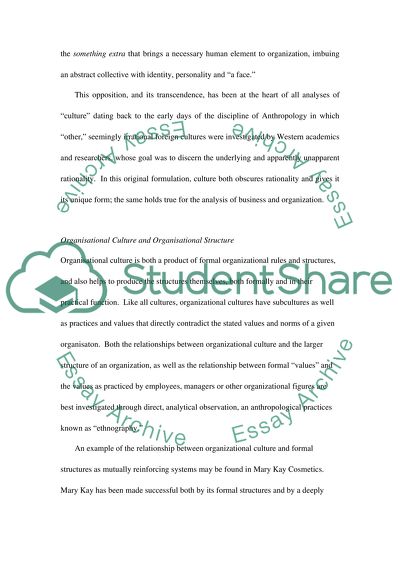Cite this document
(Reason and Meaning in Organisational Culture Essay, n.d.)
Reason and Meaning in Organisational Culture Essay. https://studentshare.org/culture/1573109-one-of-the-major-strengths-of-the-culture-metaphor-rests-in-the-fact-that-it-directs-attention-to-the-symbolicsignificance-of-even-the-most-rational-parts-of-organisational-life-gareth-morgan-1986
Reason and Meaning in Organisational Culture Essay. https://studentshare.org/culture/1573109-one-of-the-major-strengths-of-the-culture-metaphor-rests-in-the-fact-that-it-directs-attention-to-the-symbolicsignificance-of-even-the-most-rational-parts-of-organisational-life-gareth-morgan-1986
(Reason and Meaning in Organisational Culture Essay)
Reason and Meaning in Organisational Culture Essay. https://studentshare.org/culture/1573109-one-of-the-major-strengths-of-the-culture-metaphor-rests-in-the-fact-that-it-directs-attention-to-the-symbolicsignificance-of-even-the-most-rational-parts-of-organisational-life-gareth-morgan-1986.
Reason and Meaning in Organisational Culture Essay. https://studentshare.org/culture/1573109-one-of-the-major-strengths-of-the-culture-metaphor-rests-in-the-fact-that-it-directs-attention-to-the-symbolicsignificance-of-even-the-most-rational-parts-of-organisational-life-gareth-morgan-1986.
“Reason and Meaning in Organisational Culture Essay”. https://studentshare.org/culture/1573109-one-of-the-major-strengths-of-the-culture-metaphor-rests-in-the-fact-that-it-directs-attention-to-the-symbolicsignificance-of-even-the-most-rational-parts-of-organisational-life-gareth-morgan-1986.


